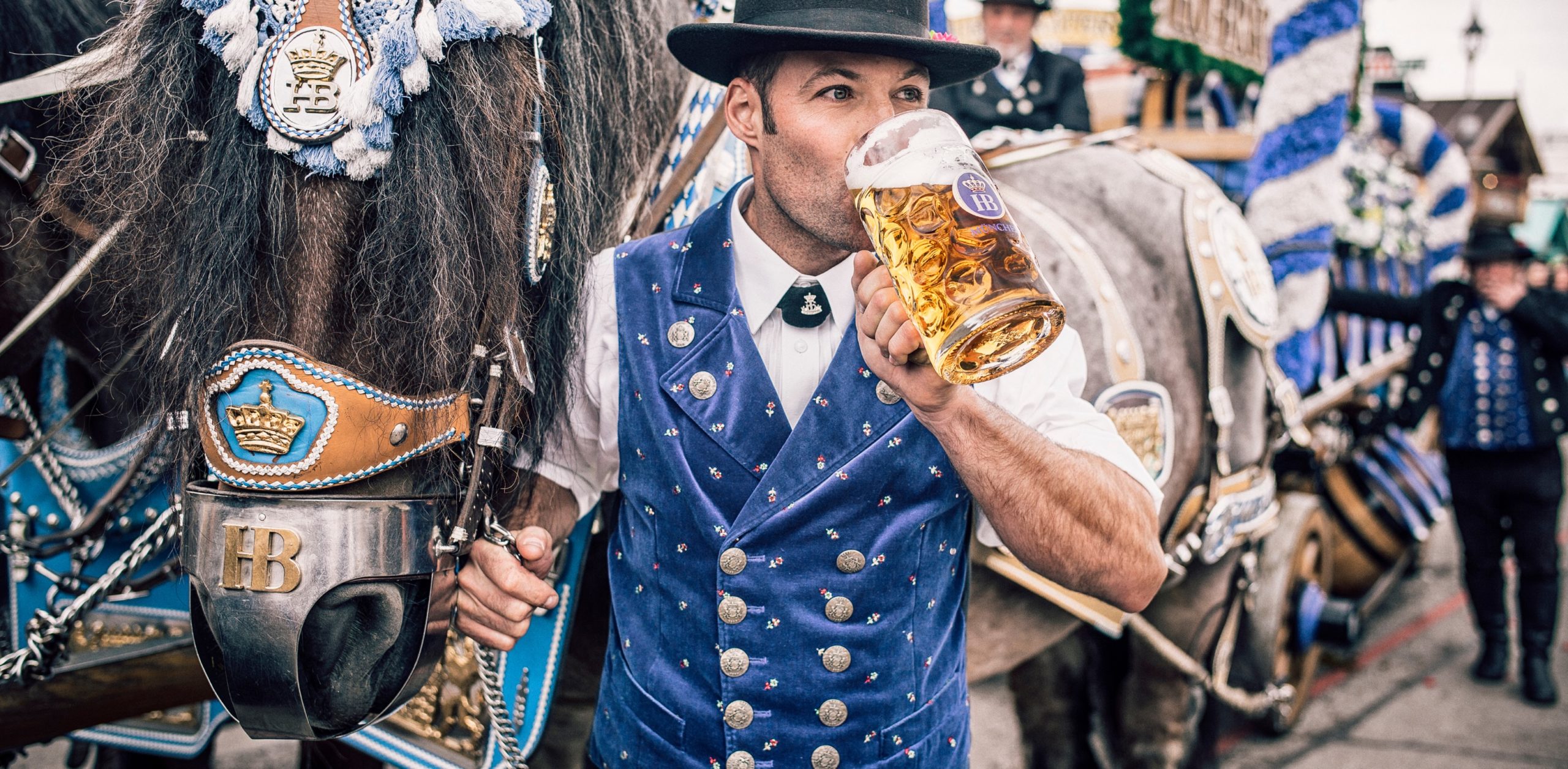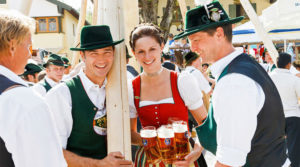
If you’ve been to our Haus this Oktoberfest you may have seen people other than our amazing staff donning traditional Bavarian attire. You may even know that the women are wearing Dirndls and the men Lederhosen, but we think it’s time you took that knowledge to the next level. And we’re here to help.
Let’s start from the top and talk about our famous headgear, the Tyrolean hat (Tirolerhut if you want to get really authentic).
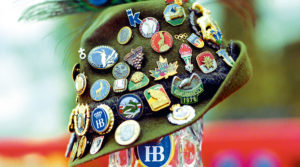
These felt or wool wonders originally came from the Tyrol in the Alps (now part of Italy and Austria). You’ll most commonly find them with a pheasant or ostrich feather, but fancier versions boast goat or boar hair. Traditionally the size of the feather or tuft of hair would reveal just how wealthy you were (or weren’t). The bigger it was the more money you had—show us the feathers!
Aside from bank account size, you can also show off your interest and wanderlust by adding pewter pins that represent places you’ve traveled or what you like to do. It’s like a much cooler scrapbook!
We mentioned Lederhosen and the Dirndl first, but did you know these are actually the Bavarian costume known as Tracht?
The Tracht tradition harkens back to 1626 when the Bavarian Prince Elector Maximilian I created a dress code that divided society into seven groups: common peasants, common townspeople, merchants, traders, minor aristocracy, knights, and lords. Peasants and common townspeople did not have any special garments to mark their status, but they quickly became synonymous with Lederhosen and Dirndl. Today, these traditional looks are worn for leisure throughout Bavaria and even Austria, but they have taken on a more ornate style like what you’d see at beer festivals like Oktoberfest.
Follow the Leder
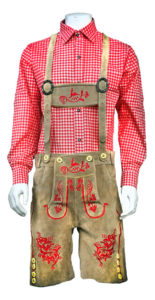
Leder translates to leather and Hosen to pants. Put the two together and what do you have? Lederhosen!
Traditionally Lederhosen are worn with high socks that can hit at the knees or you may also see smaller legwarmer-style bands around more well-endowed calves. Tradition also has men sporting plain shirts, but today’s whippersnappers like to pair their Lederhosen with colorful plaid shirts. Full costume may also have suspenders, but all true Lederhosen have a certain color embroidery or insignia to show off which region you come from.
Here’s a “fun” fact that we can neither confirm nor deny. Rumor has it Lederhosen pants are never to be washed in order to keep the leather moist. Do with that what you will. No judgment here.
Girl Power
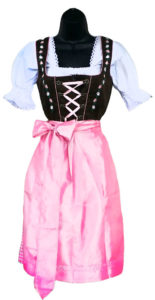
The term Dirndl originally referred to a young woman or a girl, but today it is so much more!
The Dirndl, or female dress of Tracht, was generally a blouse, bodice, full skirt, and an apron as it was worn for work around the house or farm in its inception. Summer and winter styles varied to accommodate the weather. The summer dirndl featured lightweight cotton and a short-sleeved blouse worn under sleeveless, tailored bodices, while the winter dirndl was often made of heavy cotton, linen, or wool and had long sleeves, warm skirts, and aprons.
As with the men, the younger women of today like to wear their Dirndls in a way that battles tradition; with shorter skirts that skim the knees. We can’t say we mind.
But there’s a Dirndl tradition that isn’t going anywhere anytime soon; its ability to display the status of a lady. Want to know if that cute girl eyeing you from behind her stein is taken? Just check out how her apron ribbon is tied.
To the left: She’s single. Go ahead and ask if she comes here often.
To the right: Engaged or married. Don’t touch!
In the back: She is widowed. It is also for waitresses, like the ones who treat you so well at our Haus.
In the middle: This is for young girls.
Now that you’re schooled in Bavarian style you can really enjoy the fashion of the fest! Inspired to sport your own Lederhosen or Dirndl? Get it here
